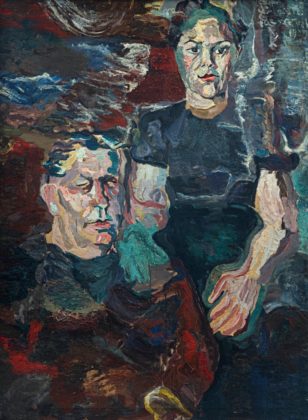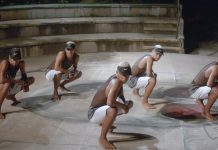Huge figure of Brazilian modernism, Flávio de Carvalho is a character of great abundance and complexity. If he is always remembered when it comes to listing the unavoidable names of Brazilian art of the twentieth century, there have been few opportunities in recent decades to know more deeply the fertility and diversity of paths explored by this multifaceted artist. The Ideal Anthropophagous exhibition, on display at Galeria Almeida e Dale, fills this absence by presenting a broad panorama of his work, addressing the main guiding questions of his production. Originally conceived by curator Kiki Mazuchelli to introduce Carvalho’s work to the English public, the exhibition – which in the Brazilian version could add a larger number of works – has a clear didactic vocation, showing its various facets, at the same time chronological articulation. language. The richly illustrated, rich catalog with five analytical texts and a chronological summary (whose English version is the first publication about the author in this language) also assists in this effort to draw a more complete picture of his production.
Adopting a stripped montage, the exhibition presents the visitor with a very dense volume of paintings and drawings. One of the highlights is the large panel of portraits he made over decades, which testifies to his great appreciation of the human figure, devoting himself almost exclusively to portraits and nudes. His interest was not in the physiognomy but in the psychological aspect of the portrayed, which makes his work close to the surrealist and later expressionist aspects. The show also brings to light experiments developed by him in the 1970s, using phosphorescent paint that shines under black light, reinforcing his interest in researching new media and materials. Carvalho painted and wrote all his life. And there is, even in his most revolutionary works, often associated with an impulsive temperament, a theoretical basis, and acute conceptual reflection, Kiki recalls. At different times, and using different strategies (architecture, theater, performative action), the artist demonstrates how he anticipates, and quite early, the general state of the arts in the country. “His conceptual projects attest to his extraordinary achievement. to expand the field of art beyond known territories and forms, thus broadening the very definition of what can be considered art, ”explains the curator.
Such moments of great creative power, many of them ephemeral or unfulfilled, are represented in the exhibit through extensive documentation. Carvalho was, for example, a pioneer among the first modernists of São Paulo architecture and won the admiration of avant–garde like Mário and Oswald de Andrade with the project he presented in a contest held for the São Paulo Government Palace in 1927, under the suggestive pseudonym of. Efficiency. In 1931, performs Experiment no. 2, a scathing act against false Catholic morality, walking provocatively against a Corpus Christi procession with its head covered by a beret, being almost lynched by the population. In Experience no. 3, performed almost thirty years later, hits patriarchal morale when he decides to parade through the city streets wearing New Look, a costume he had developed as the ideal outfit for men, replacing the traditional suit and tie with a pleated skirt, a blouse. of light, puffy cloth and a fishnet to hide the varicose veins.
In dialogue with his more plastic work, the diversity of experiences and the often rebellious and performative character of his work, which is difficult to translate into expository elements due to its ephemeral and conceptual character, becomes more concrete. The replicas of the masks used in the play The Ballet of the Dead God (originally written in 1931) and re–enacted by the Uzyna Uzona Theater Theater sometimes, including the vernissage of the show, coexist with a select set of paintings from the 1930s as well. at the opening of the exhibition.
His ability to subvert patterns and try to establish new bases for reflection on the place of man and art in the world is impressive. I was not afraid of combat. It defied society, opposed the moralistic hypocrisy of an extremely religious society. “He has been interested in two fields of knowledge throughout his life, psychoanalysis, relatively new at that time, and ethnology,” explains Kiki. It is for the confluence of these two fields, for a permanent desire to try to understand the world from behaviors built since ancient times, that the curator interprets her very diverse production.
Another interesting aspect of the selection is the emphasis it places on the artist’s broad social network, which somewhat contradicts the current idea that Carvalho was a lonely, marginalized man. From a wealthy family with many contacts in São Paulo’s artistic and social environment, he had close relations with the circle of first–generation modernists (the show’s own title, Ideal Anthropophagus, takes on a praiseworthy nickname attributed to him by Oswald de Andrade ) and actively participated in actions for the agglutination of the artistic milieu, such as the founding of the Modern Artists Club (CAM).
Berlin – After England, where the artist lived between 1914 and 1922 but where his work had never been exhibited before, it will be time for the German public to get to know his work more closely, whose disruptive, experimental and critical character will be central to the Biennale. from Berlin next year. “Her interest in mass psychology (Freud) allows us to analyze ideas of homeland, religious fanaticism, fear, crowd organization, lynching, fake news, and dissident bodies in public space,” says Lisette Lagnado, one of the curators of the event. “For us, Flavio is an antihero,” she summarizes.















